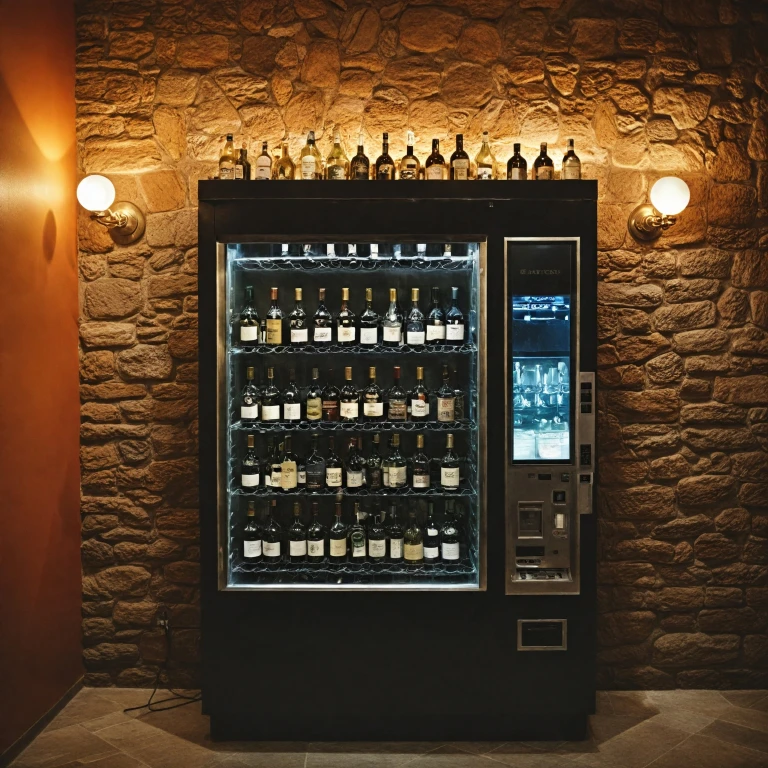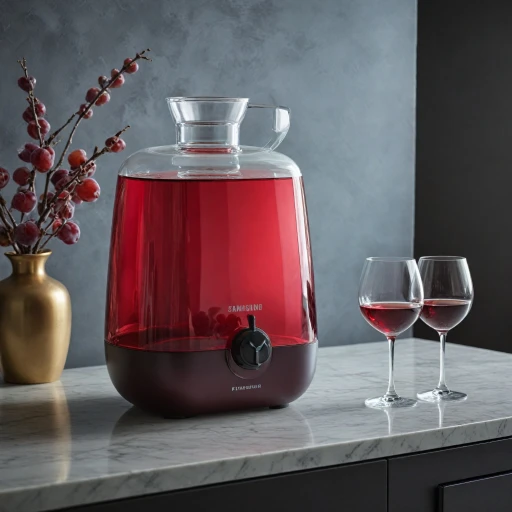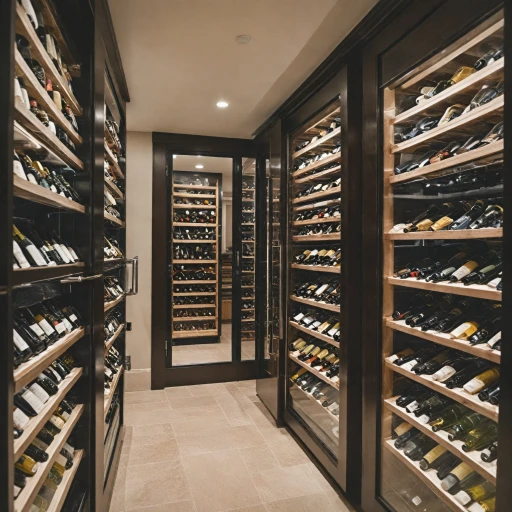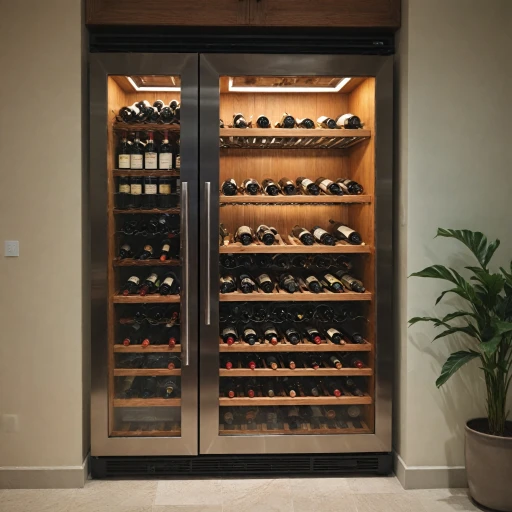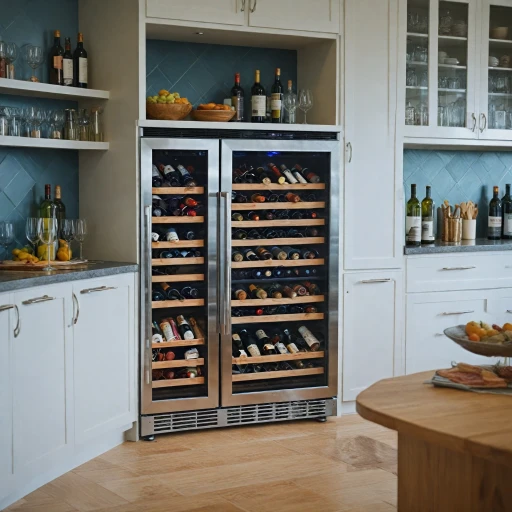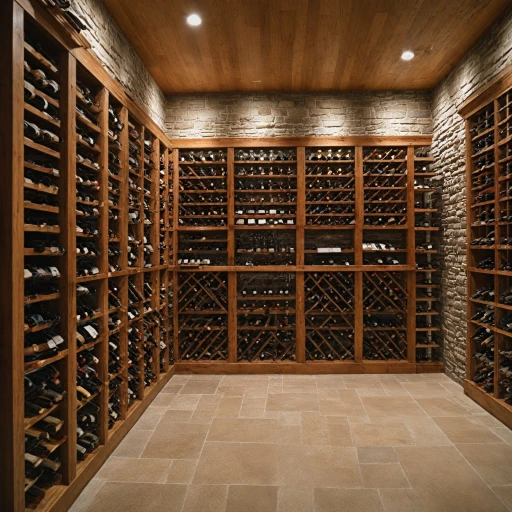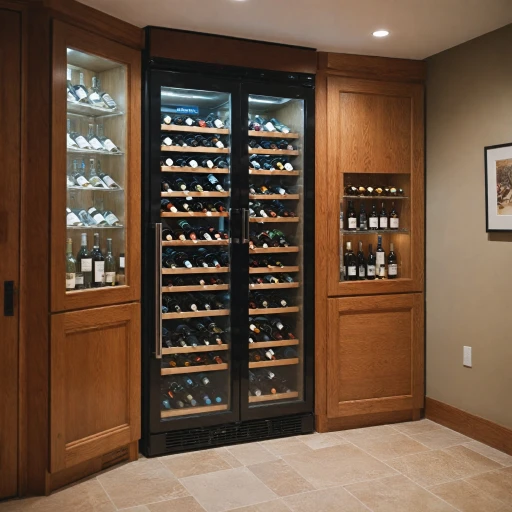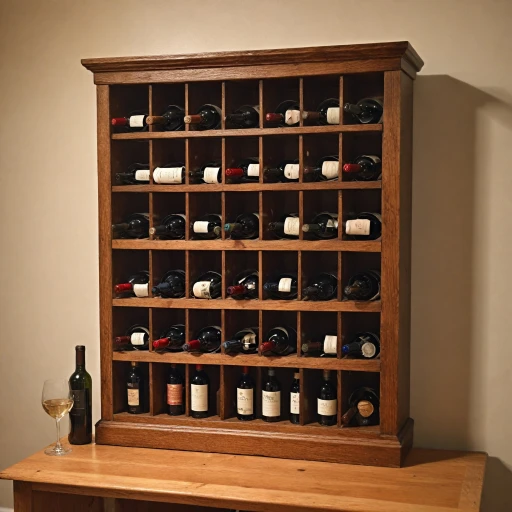
The Rise of Wine Vending Machines
The Evolution of Accessible Wine
Wine vending machines have emerged as a revolutionary advancement in the world of automated retail. Once a niche concept, these machines have become more sophisticated and widespread, delivering an impressive range of wines directly to consumers with the push of a button. As technology evolves, the trend continues to gain momentum, catering to the increasing demand for convenience and quality in the wine sector. The journey of wine vending machines began with the basic need to merge convenience with the luxury of wine consumption. With the rise of snack drink machines and coffee vending solutions, the leap to integrating a variety of beverages, including wine, into vending systems was inevitable. Consumer technology preference shifted toward solutions that offer quick and efficient service, paving the way for smart vending innovations. Wine dispensers, beyond their allure, have robust systems in place to ensure the preservation of bottle integrity. Initially seen as suitable for simple snack or beverage vending, these machines have evolved, featuring smart refrigeration and precision control to maintain the ideal conditions for wines, whether red or white. This development meets consumer expectations for quality and freshness. Despite being in their formative stages, wine vending machines hold significant appeal for enthusiasts and novices alike. As the landscape for wine products continues to evolve, this integration into automated vending reflects broader patterns within the food and drink industry, where convenience, variety, and speed intersect. For those interested in understanding more about the constituents of wine coolers and their alcohol content, see this comprehensive guide on wine coolers. In the broader perspective, the success and challenges of wine vending machines rest upon their operational efficiencies and the ability to adapt to consumer demands and regulatory standards. The future likely holds further innovations to enhance their functionality and appeal.How Wine Vending Machines Work
Understanding the Mechanics of Wine Vending
Wine vending machines, also known as wine dispensers, are revolutionizing the way consumers access their favorite wines. These machines are designed to offer a seamless experience, combining technology with convenience. At their core, wine vending machines operate on a sophisticated system that ensures the quality and freshness of each bottle.
Typically, a wine vending machine is equipped with a refrigeration system to maintain the optimal temperature for both red and white wines. This is crucial as temperature plays a significant role in preserving the taste and aroma of wines. The machines often feature a smart interface, allowing users to select their preferred wine with ease. Some advanced models even offer a touchscreen display, providing detailed information about each wine, much like a sommelier would.
These machines are not just limited to wines; they often include a variety of drink and food options, such as coffee, beer, and snacks. This versatility makes them a popular choice in locations like airports, hotels, and shopping centers. The integration of a smart system allows for real-time inventory management, ensuring that the machine is always stocked with popular products.
One of the key components of a wine vending machine is the dispenser mechanism. This system ensures that each pour is precise, minimizing waste and maximizing customer satisfaction. The dispenser machine is designed to handle various bottle sizes, accommodating different brands and types of wines. Additionally, some machines feature a locker vending system, providing a secure way to store and dispense high-value bottles.
For those interested in the finer details of wine service, exploring the art of choosing the perfect champagne flutes can enhance the overall wine experience. This attention to detail is what sets wine vending machines apart from traditional drink vending options.
Benefits for Consumers and Retailers
Advantages for Each Party Involved
Wine vending machines offer a plethora of benefits for both consumers and retailers, paving the way for a convenient and efficient shopping experience. To understand these advantages, it is crucial to explore how these systems bridge the gap between demand and supply in unique ways.
Consumer Convenience and Experience
- 24/7 Accessibility: One of the standout features of wine vending machines is their round-the-clock availability. Whether it’s a specific craving or a spontaneous dinner party, consumers can rely on these machines to provide easy access to a wide selection of wines anytime.
- Product Variety: With the ability to stock multiple bottle types, from reds and whites to rosés and sparkling wines, vending machines ensure that customers can find something that suits their taste preferences. This diverse range also includes a mix of local and international wines.
- Enhanced Choice: Unlike traditional retail, where shelf space can be limited, these machines can offer a vast array of products, ensuring that consumers have more choices at their fingertips. The smart fridge technology integrated into these dispensers makes this possible.
Retailer and Business Advantages
- Cost-Effective Operations: By minimizing the need for staff to manage sales directly, wine vending machines can reduce operational costs significantly. This allows retailers to invest more in product quality and variety.
- Space Efficiency: Since these dispensers take up less space than traditional retail setups, businesses can optimize floor space usage, potentially leading to better product placement strategies.
- Data-Driven Insights: Advanced wine vending technologies provide retailers with invaluable data on consumer preferences and purchasing patterns. This information can guide stocking decisions and promotions.
- Brand Visibility: Vending machines can be strategically placed in high-traffic areas, enhancing a brand's visibility and accessibility to potential customers.
For those interested in understanding more about optimized wine storage solutions, exploring choosing the perfect wine cooler units could offer additional insights into maintaining wine quality before and after it enters the vending machine system.
Challenges and Considerations
Addressing the Challenges of Wine Vending Machines
As wine vending machines become more prevalent, several challenges and considerations must be addressed by both manufacturers and operators to ensure their success and reliability.
Ensuring Quality and Freshness
One of the primary concerns is maintaining the quality and freshness of the wine. Temperature control is crucial, as fluctuations can affect the taste and composition of the wines. This requires advanced refrigeration systems within the vending machines to keep the cool wines at their optimal serving temperature. Additionally, the handling of bottles and their proper storage within the machine to avoid breakage is of utmost importance.
Regulatory Compliance and Safety
Another significant challenge is compliance with local regulations regarding alcohol sales. Different regions have varying policies on vending alcohol, and machines must be equipped with age verification systems to prevent minors from purchasing alcoholic drinks. This often involves implementing card readers or identity verification technologies.
User Experience and Technical Reliability
To enhance consumer satisfaction, the interface of vending machines, whether for wine or snacks, must be user-friendly. A seamless transaction process involves quick payment systems and easy selection. Furthermore, ensuring the reliability of mechanical components like dispensers and payment mechanisms is essential to avoid disruptions in service.
Handling Diverse Product Offerings
Lastly, the incorporation of various products, such as combinations of wine, beer, non-alcoholic drinks, and snacks, requires careful planning and system design. Machines that offer a mix of hot food, frozen food, and snack drinks need to integrate specialized sections or parallel systems that can cater to different temperatures and storage needs.

